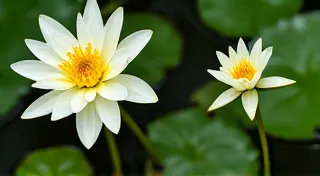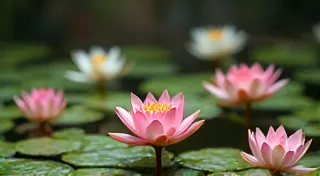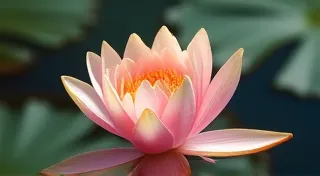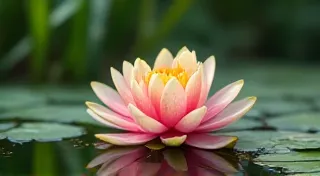The Benefits of Introducing Fish to Your Water Lily Pond
Your water lily pond is a tranquil oasis, a vibrant display of aquatic beauty. But have you ever considered adding fish? Introducing fish to your water lily pond can enhance its ecosystem and aesthetic appeal, but it's a decision that requires careful consideration. This article explores the pros and cons of adding fish, and provides guidance on choosing the right species for compatibility with your water lilies and overall pond health.
The Advantages of Adding Pond Fish
There are several compelling reasons to introduce fish to your water lily pond:
- Algae Control: Certain fish, particularly those that graze on algae, can naturally help keep your pond water clear. While they won't eliminate algae entirely, they can significantly reduce excessive growth.
- Pond Health & Ecosystem Balance: Fish contribute to a more balanced pond ecosystem. They consume small invertebrates, helping to control populations that could otherwise become problematic.
- Enhanced Aesthetics: Let's face it – fish are beautiful! Watching them swim amongst your water lilies adds another layer of visual interest and serenity to your pond.
- Aeration: Fish movement helps aerate the water, which is beneficial for both the fish and the water lilies.
Choosing the Right Fish: Compatibility is Key
Not all fish are suitable for a water lily pond. Some factors to consider include size, feeding habits, and tolerance to varying water conditions. Here are some popular choices:
Koi
Koi are stunning, long-lived fish known for their vibrant colors. They can grow quite large (up to 2-3 feet), so a larger pond is essential. Koi are also bottom feeders, meaning they consume decaying matter, which can help keep your pond clean. However, their large size means they can sometimes uproot smaller water lilies if they're aggressively searching for food.
Goldfish
Goldfish are a classic choice for ponds, and for good reason. They’re hardy, relatively inexpensive, and come in a variety of colors and shapes. Like koi, they are bottom feeders and contribute to algae control. They are smaller than Koi which can be beneficial in smaller ponds.
Small Native Fish
Consider introducing smaller native fish species to your pond. These often require less care and can be a great way to support local ecosystems. Research your local species to ensure they are compatible with water lilies and won’t damage them.
Potential Drawbacks and Considerations
While adding fish can be beneficial, it's important to be aware of potential drawbacks:
- Increased Maintenance: Fish require regular feeding and monitoring for health issues.
- Waste Production: Fish produce waste, which can contribute to algae growth if not managed properly through filtration or water changes.
- Potential Damage to Water Lilies: As mentioned, larger fish like koi can sometimes uproot water lilies.
- Predation: Depending on your location, birds or other predators might prey on your pond fish. Consider a pond netting or other protective measures.
Tips for a Successful Introduction
- Pond Size: Ensure your pond is large enough to comfortably accommodate the fish you choose. Overcrowding can lead to stress and disease.
- Gradual Introduction: Introduce fish gradually to avoid shocking the pond’s ecosystem.
- Feeding: Provide a balanced diet suitable for the fish you’ve chosen.
- Filtration: Consider a pond filter to help maintain water quality and reduce waste buildup.
- Observation: Regularly observe your fish for signs of illness or stress.
Introducing fish to your water lily pond can be a rewarding experience, adding beauty and life to your aquatic garden. By carefully considering the pros and cons, choosing compatible species, and providing proper care, you can create a thriving ecosystem that benefits both your fish and your water lilies.





